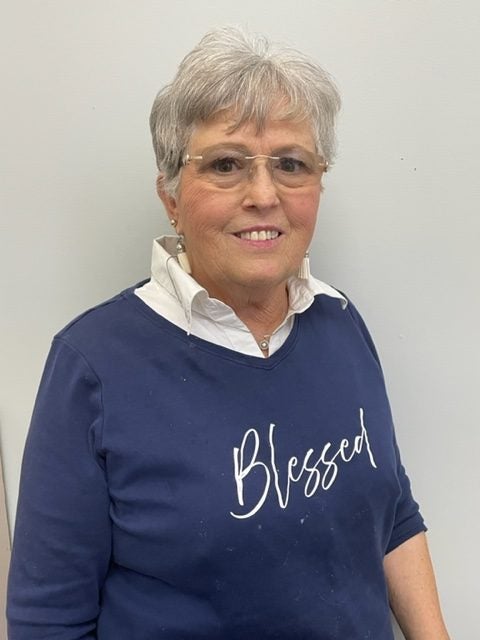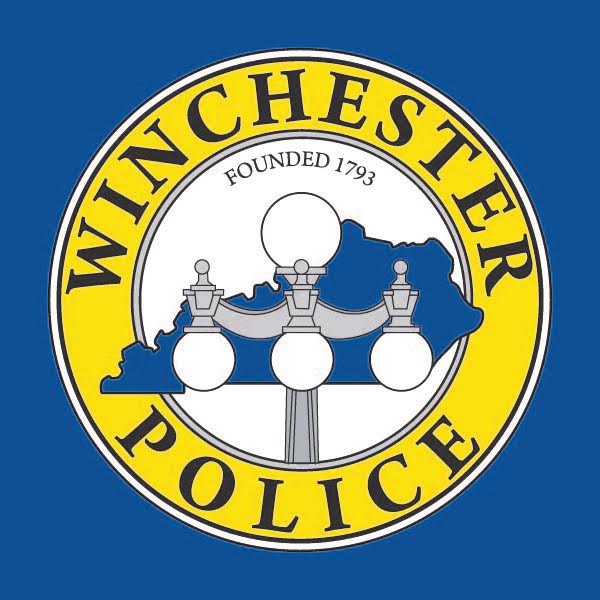Down the Lane: Cookbooks and Country Folks
Published 3:30 pm Sunday, March 13, 2022

- Winchester Sun columnist Sue Staton
|
Getting your Trinity Audio player ready...
|
There comes a time in one’s life that they realize they are going to have to eliminate some things that they have hung onto for years.
For me, this is cookbooks today.
I do not know what it is about cookbooks but I have been drawn to them like a magnet.
I find it so hard to pass up a cookbook at a yard sale.
I also find it hard to not cut out a recipe from a magazine or anything that sounds like it would taste good to me.
I guess you can tell I like my cooking and everyone else’s cooking.
My Mom was a delicious cook and I learned to cook at a very early age.
I do not remember her using that many cookbooks but it seemed like everything she cooked turned out good. She was a country cook and also a cook who would try new recipes at times.
As I was going through my overloaded shelves of cookbooks I ran across a cookbook that I had forgotten I had. The cookbook is Ma’s Cookin’. It is a cookbook originated from the Ozark Mountains, however, I bought it on my first trip to the Smoky Mountains. It could have easily come from the homes of eastern Kentucky.
I think I bought it to get the recipes for apple stack cake and butter rolls to try to make them like my Mom used to make. The cake is often called a wash day cake and was made on wash days. It is layered in stacks with an apple mixture in between each layer and is yummy. The recipe in the book was a bit different than my Mom’s was.
I still haven’t found her butter roll recipe that was sweet and used a lot of butter and a nutmeg type sauce that went over the top. My siblings and I loved it and I can smell it now fresh out of the oven.
After looking through “Ma’s Cookin’ cook book,I found I was not quite ready to let go of it. It is much like other things I need to let go of, the sentimental side of me seems to win out.
It brought back so many memories of my life growing up. Inside it’s pages was a recipe for lye soap that I remember helping my Mom make.
You use the fat of the hogs and lye and water to make the soap. Though we did not use it for baths, we did use it in the washing machine after scraping some flakes into the wash water.
The purpose was to take out stains. Believe it or not, I was very young when I helped my Mom, but I still remembered how to make it. My job was to help Mom stir it . We cooked it over a big black wrought iron cooking pot outside. The ladle was huge. I remember her making sure I knew how dangerous lye was and I had to be careful not to let it touch my skin.
After hog killing we would eat cracklings and crackling corn bread. Both were like a treat for us. Cracklings were made until the skins of hog meat would cook until they were crisp and crackled when you eat them. Stores still carry cracklings though a little different. We enjoyed them warm from cooking.
The book talked about cooking hog feet and warning the recipe user to really clean well between the toes before you cooked them.
My mom never cooked the toes but we have eaten ham hocks as they were called. Another recipe was for head cheese.
We called it souse meat. We ate it cold or fried for sandwiches. My brothers really liked it. Would I eat it now? Probably not.
Living on the farm however, we usually ate what we grew or killed and little was ever wasted. This included squirrels, chickens, rabbits, fish, turtles and frog legs.
I like frog legs much better from a farm pond than from a grocery store. My brothers enjoyed the hunt of both and we all enjoyed what we brought in.
We have often had fried chicken or rabbit for breakfast with gravy and biscuits with hot, sassafras tea to drink. Looking back now, I would love to sit at that kitchen table with my family for one of those meals. I did not realize how rich I was back then.
There are so many other recipes in this book that I remembered being put on our kitchen table. However, if I mentioned more I would not have the room to tell you some of the neat other things I found in the book such as anecdotes and poems.
Like these mountain people we made some home remedies at our house also. My daddy was a believer of using salt water often as a cure for some ailments or liniment water. You used soda when you were out of toothpaste.
Listed below are a few cures and recipes for what ailed you in the mountains, from this book and I will quote: “Using sumac leaves is good fer an’ kin cure asthma and hay fever.”
“Got stomach trouble? Go out an’ dig sum golden-seal roots, they’s good fer it.”
“Stump root is real good fer warts an’ other skin ailments.” “Got liver ailments? “ use some dandelion root n May apples.”
I personally do not know what golden-seal root looks like or is.
To make a poultice they advised one to use bread and milk, hawg fat, terbaccer, an’ red clay. Now the amount of each ingredient was not listed but I would think it would be only a little amount each. Hoping they were using pressed tobacco leaves instead of tobacco juice.
I do believe home made remedies are universal. My exchange student from Indonesia brought her own remedies for certain sicknesses to the United States with her.
If you really want to know how to make ink it tells you how in this book. All I ever heard was to use poke berries.
Planting time hints are also given and most all farmers I ever knew went solely by the farmer’s almanac when doing their planting if they wanted a good crop.
This book gave a few good hints about planting.
Any plants that grow underground should be planted in the dark of the moon.
This would mean root vegetables. All other vegetables are to be planted int the light of the moon.
It said “taters” have to be dug in the light of the moon or they would rot.
As long as I was ever on the farm we went by this. I never liked digging potatoes because it was a dirty job to me. I would be completely in awe, however, how we would have enough potatoes to do us from one year to the next and how many we would get from each place. We would use some that were left for seed potatoes for the next year.
For the young ladies and their beaus, a bit of advice was given on what to wear. This is the warning: “Marry in red, you’ll wish yourself dead. Marry in black, you’ll wish yourself back. Marry in brown, you’ll live in town. Marry in yellow, you’ll be shamed of yore feller. Marry in green, you’ll be shamed to be seen. Marry in blue, you’ll always be true. Marry in white, you’ll always do right.”
A lot can be said for mountain and country folks but I have found most of them smarter than a lot of city folks. They know how to survive where a lot of people would not know how to survive without a grocery store. From the empty shelves we are seeing now in the stores I wonder if we may not have to go back to that type of living.
I have found them to be friendly people and I want to end this article by leaving you this anonymous poem found in the book,entitled, Bein’ Friendly. The words are spelled as in the cook book.
“Oh, bein’ friendly’ is a privilege. Sum hurried folks ferget. Bein’ friendly is a tonic, which the more you give, the more you git. Bein’ friendly is a duty. Of’en to the four winds furled. But th’ Great Creator planned this to be a friendly world.”
Never think you are better than anyone!
Be friendly to all you meet, I too believe the great creator meant for us to do.
A longtime Winchester Sun columnist, Sue Staton lives in Clark County.





